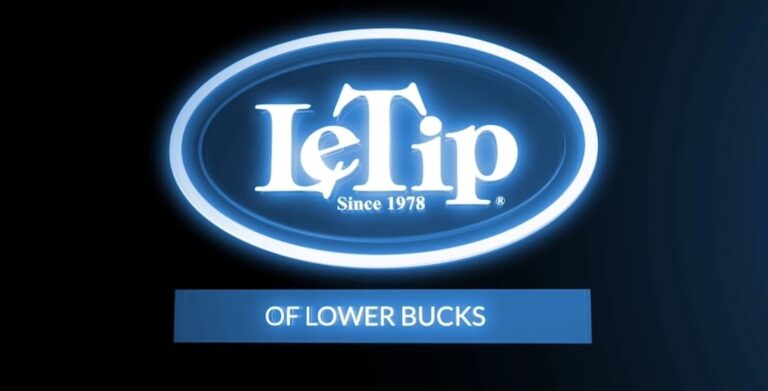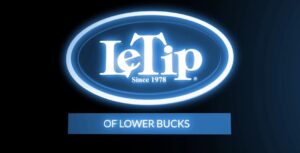Meeting someone for business isn’t just about shaking hands anymore. With so much happening online, it’s smart to know who’s worth your time before you ever meet in person. The right connection can open doors, save you headaches, and make your work life a lot easier.
Spotting a genuine partner online is possible when you know what to look for. Digital first impressions, communication habits, shared values, and a little research can reveal a lot about someone’s approach and trustworthiness. In this post, you’ll find clear ways to identify these key signals, so you can focus on building strong partnerships from the first message—not just the first handshake.
Why Pre-Meet Evaluation Matters in Modern Business
The way we build business relationships has changed. Instead of waiting to meet people in person, more of us are taking steps to assess new contacts long before the first handshake. In today’s busy workplace, every meeting comes with a cost—your time, energy, and even reputation. Thinking carefully about who you meet isn’t just about saving time, it’s about working smarter and protecting what you’ve built.

Photo by Lukas
Protecting Your Time and Resources
Every meeting you set up has a price tag, even if you can’t see it on paper. The real expense is the opportunity you’re passing up while you sit down with someone who might not be the right fit. Pre-meet evaluations help you:
- Avoid wasted meetings — Time with someone who isn’t aligned with your goals can pull you away from better opportunities.
- Keep your focus — Setting boundaries before agreeing to meet helps you stay on track with key projects.
- Manage your mental load — Fewer unnecessary meetings reduce stress and keep you focused on what matters.
In business, opportunity cost is real. Spending an hour with the wrong person can mean missing out on the right deal.
Reducing Risks in New Connections
Meeting someone new isn’t just about swapping business cards. When you walk into a room unprepared, you open the door to surprises—some of which you don’t want. Taking time to check a connection before you meet can help you:
- Spot red flags early—Look for inconsistencies in their online presence or feedback from others.
- Assess compatibility—Review past projects or mutual contacts to see if your values match.
- Safeguard your brand—Protect yourself and your company from risky partnerships or bad actors.
Trust is built, not given. Pre-meet evaluations are your chance to start putting that foundation in place.
Maximizing the Value of Face-to-Face Meetings
Face-to-face meetings have power. They build trust, deepen relationships, and move deals forward. But those benefits only show up when you’re meeting the right person at the right time.
What happens when you prepare before you meet?
- Conversations are more focused—You already know where you align and what questions to ask.
- Follow-ups are easier—Shared interests and clear goals make it easier to keep the conversation going.
- Big wins are more likely—A strong pre-meet screen leads to higher-quality business connections.
By making use of pre-meet evaluations, you’re stacking the deck in your favor—turning every meeting into a real opportunity.
Key Digital Indicators of a Strong Business Connection
Making wise connections starts before the first handshake. That first impression comes from your online sleuthing—scrolling through LinkedIn, browsing profiles, looking at their posts, and noticing how others interact with and talk about them. Not all signals are created equal. Some stand out as real proof that someone is worth your time. Here’s how to spot those digital signals that set genuine, worthwhile connections apart from the rest.
Assessing Online Reputation and Social Proof
 Photo by Bastian Riccardi
Photo by Bastian Riccardi
A strong reputation online is more than having a large follower count. What others say matters—especially in business.
Key ways to spot a credible connection:
- LinkedIn profiles: Look for a complete and active profile. Check their experience, summary, and even the “Featured” section. Is their background relevant to what you care about?
- Endorsements and recommendations: Real people, especially known industry peers, vouching for them is a high-value trust signal. Recommendations provide more context about work ethic and reliability.
- Industry contributions: Are they speaking at events, sharing their expertise, or publishing articles? These activities show they care about the field, not just themselves.
- Public feedback and reviews: Search for reviews, testimonials, or comments about their work on platforms like Google Reviews, Glassdoor, or even industry forums.
A solid online reputation backed by positive feedback, active engagement, and genuine endorsements means you’re likely looking at someone who values trust—and earns it.
Evaluating Consistency and Professional Branding
A great business connection looks the same no matter where you find them online. Sloppy or mismatched profiles are red flags.
Here’s what to watch for:
- Branding consistency: Their photos, bios, and core messages should match across LinkedIn, Twitter, company websites, and any industry groups. Consistent branding shows attention to detail and seriousness about their reputation.
- Posting habits: Are they active, sharing useful insights, and interacting with others? Steady, relevant posts are a sign they put effort into their work—not just when they need something.
- Alignment with best practices: Notice if their approach matches your industry’s gold standards. Do their posts provide value, or are they just self-promotion? Respect from industry peers and smart, timely commentary are both green flags.
Consistency across platforms means they’re not just putting on a show for LinkedIn. They know who they are, and they’re not afraid to show it everywhere.
Spotting Shared Connections and Network Overlap
Your strongest business partnerships usually don’t start cold—they’re built on overlap and mutual trust.
How to uncover network signals:
- Mutual connections: If you have common LinkedIn contacts or follow the same groups, this is an instant starting point. You can even reach out for “off the record” feedback before making an introduction.
- Shared communities and affiliations: Look for membership in trade associations, alumni networks, or mentorship circles. These ties suggest they move in circles that value expertise and ethics.
- Engagement in group discussions: If you see them active in the same online forums or industry Slack channels, this adds another thread of connection.
The more your networks overlap, the faster you’ll build trust. Shared ties mean shared values—and fewer surprises when you finally meet face-to-face.
Communication Cues: What Early Interactions Reveal
First messages matter. Whether it’s that “nice to meet you” on LinkedIn, an early email, or a quick DM, how someone talks with you before meeting tells you a lot. These on-screen signals, even from a single back-and-forth, help you decide if this might be a good business fit or a headache in disguise. Taking time to read between the lines pays off—sometimes, what’s not said is just as important as what is.
Responsiveness and Clarity in Digital Communication
Slow replies, unclear answers, or sloppy emails can be big red flags. The way a person handles a simple message hints at their larger approach to business.

Photo by Cytonn Photography
Here’s what to look for right away:
- Promptness: Do they reply within a reasonable time? Consistent late replies may signal disorganization or lack of respect for your schedule.
- Tone: Friendly, focused, and polite communication is a green flag. If their messages are curt, demanding, or overly casual, it might show a lack of professionalism.
- Attention to Detail: Well-written, direct messages show they care. Sloppy grammar, missing info, or ignoring your questions hint at carelessness.
- Follow-Through: Do they offer the info or next steps promised, or do you have to chase them? Requiring multiple reminders is a warning sign of potential future problems.
A good business connection shows respect and interest by being clear, concise, and on time in digital exchanges. If their messages feel rushed or you sense they aren’t paying attention to details, consider it a cue to slow down or reconsider.
Common positive signs:
- Timely responses (usually within 24 hours on business days)
- Direct answers to your questions
- Clear subject lines and proper greetings
- Summaries or bullet points if the topic is complex
Red flags to watch for:
- Long delays or “sorry for the late reply” excuses, every time
- Messages that are hard to understand or full of typos
- Vague answers or dodging simple questions
- Reacting with annoyance or defensiveness if you seek clarity
Authenticity and Transparency in Early Dialogue
The first few messages set the tone for trust. People who are open and honest from the start make business easier. If you feel like you’re talking to a real person, not a sales script, that’s a good sign.
When you assess authenticity and transparency, pay attention to:
- Openness: Do they freely share their role, track record, or goals? People who dodge basics or over-exaggerate are often hiding something.
- Honesty: Look for admission of limitations or straightforward answers when they don’t know something. If everything sounds “too good to be true,” it probably is.
- Intentionality: Clear, direct communication signals that they plan ahead. Someone who lays out the next steps or clarifies expectations aims to collaborate, not just sell themselves.
- Consistency: Their words should line up with their profiles and what others say about them online. Gaps or contradictions can be signs of dishonesty.
Some green flags that point to reliable business partners:
- Willingness to share relevant info, even if it’s not all positive
- Offers context or reasoning behind their suggestions
- Asks well-informed questions about your business or needs
- Explains their business style without overselling
Red flags to avoid:
- Making sweeping promises or guarantees (“We’ll double your leads in a week!”)
- Refusing to answer simple but fair questions
- Sharing inconsistent or vague details about their business
- Pushing for rushed agreements or skipping key steps in the process
When digital conversations feel real, clear, and open, it’s much easier to trust what comes next—whether you meet in person or keep things virtual. Live by the old rule: if it feels forced or fake, it probably is. A little early vigilance saves a lot of time and trouble later.
Values and Vision Alignment: The Foundation of Trust
Spotting a great business connection starts with understanding their core values and long-term vision. When your values and missions line up, you build trust before you ever meet. This shared foundation shapes stronger partnerships and reduces surprises down the road. Uncovering this isn’t just about checking boxes—it’s about learning whether this person or company plays the way you do, fights for what matters to you, and stands for more than sales or short wins.
 Photo by Walls.io
Photo by Walls.io
Researching Mission Statements and Public Stances
Doing your homework on a potential business partner goes beyond scanning their “About Us” page. Look at what they actually say and do in public—this will show if their values reflect your own. Here’s how to dig a little deeper:
- Check the mission statement. Look for a clear, short statement of purpose on their website or LinkedIn. A good mission statement isn’t just PR—it explains what drives the business, what they value, and how they seek to make a mark.
- Read their latest press releases and blog posts. Companies often spell out values or key commitments in these. Do they talk about sustainability, innovation, or giving back? This detail reveals what issues they care about.
- Look for action, not just words. See if the company’s actions match its stated values. For example, do they promote employee wellness if they claim to care about it? Have they responded publicly to industry or social concerns, and how transparent were they?
- Check their community and industry efforts. Membership in trade groups, partnerships with nonprofits, or events they sponsor all offer hints into what matters most to them.
- Read reviews and third-party feedback. Sites like Glassdoor, Google Reviews, and even industry forums can help you spot not just what a company says, but how others experience working with them.
Plain talk and matching actions are what build trust. If you see a pattern of words and deeds working together, it’s a strong sign of honest, lasting values.
Asking the Right Questions Before the Meeting
Don’t wait for the first face-to-face to learn if you match. A quick set of questions—sent via LinkedIn, email, or through a mutual friend—can reveal a lot. Here are simple, practical asks that work:
- “What would you say your company cares most about besides profits?”
- “Which causes or issues does your team support, on or off the clock?”
- “How does your organization define success, short-term and long-term?”
- “Can you share a recent example where your values shaped a business decision?”
- “What are the most important qualities you look for in your business partners?”
- “Is there a recent change or challenge that shifted your priorities?”
- “How do you approach team culture and collaboration?”
- “How do you prefer to resolve disagreements or roadblocks?”
Sending a handful of these ahead of time does a few things:
- Gives you a real sense for what matters to them.
- Sets the tone for honest dialogue.
- Filters out anyone who can’t—or won’t—answer.
It’s not about grilling them. It’s about making sure you’re investing energy in someone who wants a meaningful, trust-based partnership. When you hear stories that reflect their values, and you see genuine engagement in the answers, you’re on the right path.
Getting clear on values up front makes it much easier to spot red flags and discover the business connections worth building.
Practical Steps to Research and Vet Potential Connections
Building business partnerships with confidence starts by knowing how to dig deeper before you ever shake hands. You don’t have to be a private investigator—just curious, methodical, and a little bold when it counts. With many tools and resources at your fingertips, it’s easier than ever to spot risks and find true gems. Here’s how you can vet potential connections with practical steps designed for both speed and accuracy.
Leveraging Mutual Contacts for Insight
 Photo by Anna Shvets
Photo by Anna Shvets
Mutual contacts can be your best shortcut to real-world feedback. People you both know have seen your potential connection in action—and usually have honest stories to tell.
Approach mutual contacts with:
- A polite, direct request. Keep it simple: “Hey, I noticed you’ve worked with [Name] before. Would you mind sharing what that experience was like?”
- Specific prompts if you’re close: “How was their follow-through? Did they communicate well? Would you work with them again?”
- Respect for their time and confidentiality. Some info will be sensitive—never push, and say thanks even for small hints.
What to watch for in their responses:
- Clear, direct thumbs-up or down. Hesitation or vague answers might signal red flags.
- Concrete stories over generic praise. A contact who shares a specific example is usually telling you the truth, good or bad.
- Consistency across contacts. If you get similar feedback from two or three people, that’s a strong data point.
Using mutual connections can open the door to hidden insights you’d never find in a LinkedIn profile.
Evaluating Past Collaboration and Reputation
A person’s track record reveals who they are long before they step into a meeting room. Smart vetting means looking beyond what they say and finding proof in their work.
Easy steps to check past partnerships and reputation:
- Review collaborative history.
- Browse their portfolio, LinkedIn endorsements, and case studies.
- Look for repeat clients or long-term relationships—these are green flags.
- Scan for any leadership in group projects or community initiatives.
- Look for third-party validation.
- Search for testimonials, media features, or industry awards.
- Use external review sites (like Glassdoor, Google Reviews, or trade association directories) for candid feedback.
- Pay attention to how others describe their work ethic and results.
- Dive into business outcomes.
- Find proof of successful project delivery, clear project metrics, or cost savings.
- Examine case studies on the company website or industry publications.
- Check online databases (like SEC EDGAR for public filings, or industry-specific directories) to confirm milestones and legal compliance.
- Cross-check with public records and news.
- Google their name with keywords like “scam,” “lawsuit,” or “review.”
- Check recent news for any controversies or big wins.
- Ask for references and actually contact them.
- Reach out beyond what’s listed—ask for a reference from a past client or partner with a project similar to yours.
- When you call, focus on experience working together, not just results.
Checklist: Quick Workflow for Vetting Connections
- Look up their company and personal profiles on LinkedIn and industry databases.
- Search for news articles or case studies featuring their projects or company.
- Review online feedback, testimonials, or ratings from clients or colleagues.
- Contact a mutual friend or connection for candid feedback.
- Ask for and check at least two professional references.
- Double-check public filings (if applicable) for compliance and financial health.
- Review their own web presence: website, blog, or social media for consistency and recent activity.
Smart research and a few well-placed questions protect your time, reputation, and future deals. Always listen to your gut, but back it up with facts from multiple sources. If something feels off, it’s fine to walk away. Great partnerships start long before you meet—right here, with the right homework.
Conclusion
Taking a thoughtful approach before any first meeting pays off. You save time, sidestep red flags, and build stronger relationships by checking signals online, looking for shared values, and asking smart questions. When you trust your process and do your research, you create space for better deals and real partnerships—not just handshakes.
Be proud of the homework you do. Every strong connection starts with clear signals and honest answers well before you meet. Move ahead with confidence, protect your time, and aim for business ties that lift you higher.
Thanks for reading—feel free to share your own tips for spotting great connections before the first handshake. Your insights could help someone else strengthen their network, too.





